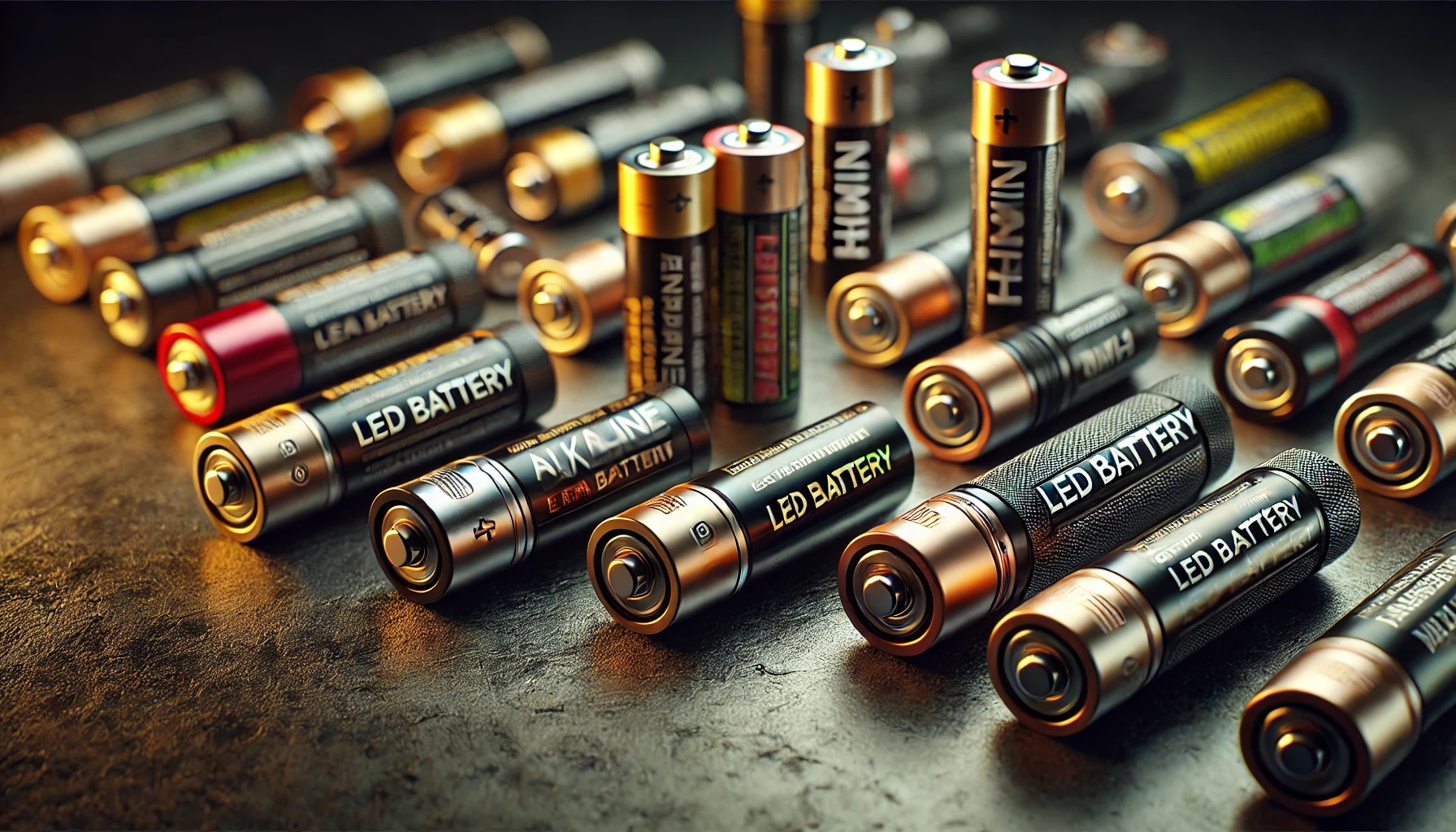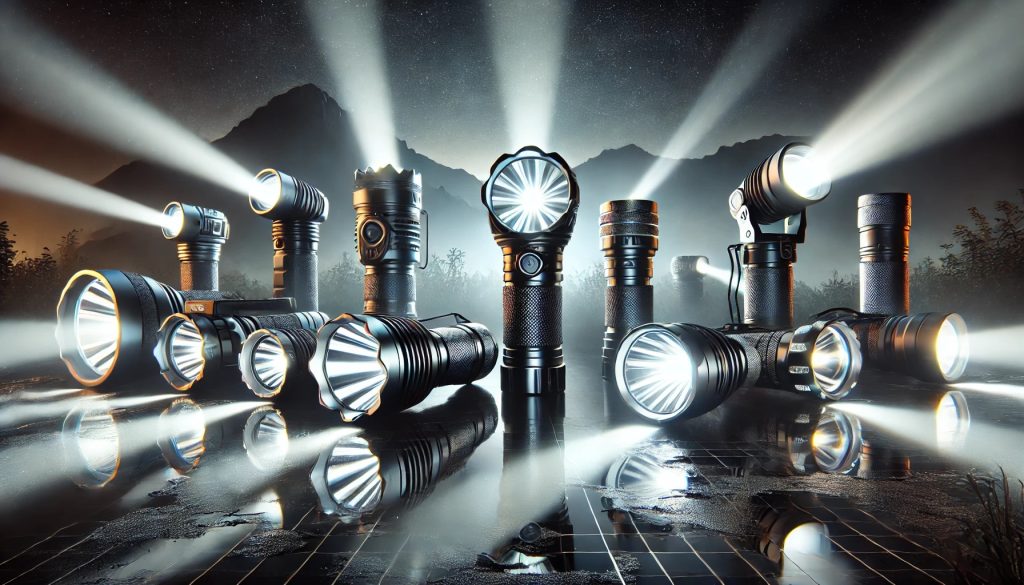The brilliance of your LED flashlight is only as reliable as the power source that fuels it. Understanding the different types of LED flashlight batteries available and how to choose the right one is crucial for ensuring your light performs optimally when you need it most. From disposable options to rechargeable powerhouses, this guide will illuminate the world of LED flashlight batteries.
Why Battery Choice Matters for Your LED Flashlight
The type of battery you choose for your LED flashlight directly impacts several key aspects of its performance:
- Brightness and Output: Some battery types can deliver a more consistent and higher voltage, which is essential for maximizing the lumen output of your LED flashlight.
- Battery Life: Different battery chemistries and capacities offer varying levels of runtime. Selecting the right battery can mean the difference between a light that lasts for hours and one that dies quickly.
- Cost-Effectiveness: While initial costs may vary, rechargeable LED flashlight batteries can be more economical in the long run compared to frequently replacing disposable ones.
- Environmental Impact: Opting for rechargeable LED flashlight batteries reduces the amount of disposable waste, contributing to a more sustainable approach.
Exploring the Different Types of LED Flashlight Batteries
When it comes to powering your LED flashlight, you’ll primarily encounter the following battery types:
1. Alkaline Batteries: The Readily Available Option
Alkaline batteries (such as AA, AAA, C, and D cells) are the most common type of disposable battery and are widely available. They offer a decent lifespan for many LED flashlight models and are relatively inexpensive upfront. However, they are not rechargeable and their performance can decline under heavy drain or in extreme temperatures. You can find more detailed information about alkaline battery chemistry on resources like the Wikipedia page for Alkaline battery.
2. Lithium-Ion (Li-ion) Batteries: The Rechargeable Powerhouse
Lithium-ion batteries are a popular choice for high-performance LED flashlights, especially those with high lumen outputs. They offer a high energy density, meaning they can store a significant amount of power in a relatively small and lightweight package. Li-ion batteries are rechargeable, making them a cost-effective and environmentally friendlier option in the long run. They also tend to maintain a more consistent voltage output compared to alkaline batteries. Different form factors exist, such as 18650, 21700, and 26650, each with varying capacities. It’s important to use Li-ion batteries with built-in protection circuits to prevent overcharging or over-discharging, which can be hazardous. Many reputable LED flashlight manufacturers, like those discussed in our article on “Illuminate Your World: Choosing the Best High-Lumen LED Flashlight for Your Needs,” often utilize and recommend specific Li-ion battery types for their products.
3. Nickel-Metal Hydride (NiMH) Batteries: A Rechargeable Alternative
NiMH batteries are another type of rechargeable battery commonly used in LED flashlights. While they might have a slightly lower energy density compared to Li-ion batteries, they are generally considered safer and don’t have the same voltage drop-off as alkaline batteries. NiMH batteries are a good balance between performance, safety, and cost-effectiveness for many LED flashlight users.
4. Primary Lithium Batteries: Long Shelf Life and Performance
Primary lithium batteries (non-rechargeable) offer exceptional shelf life and perform well in a wide range of temperatures. They are often used in emergency LED flashlights or those that are not used frequently, as they can hold their charge for many years. While they offer excellent performance, their non-rechargeable nature can make them less economical for regular use.
Choosing the Right Batteries for Your LED Flashlight
Selecting the appropriate LED flashlight batteries depends on several factors:
- Flashlight Requirements: Check the manufacturer’s recommendations for the correct battery type and voltage for your specific LED flashlight model. Using the wrong type can damage the flashlight or lead to suboptimal performance.
- Usage Frequency: If you use your LED flashlight frequently, investing in rechargeable LED flashlight batteries (Li-ion or NiMH) is likely the most cost-effective and environmentally responsible choice.
- Power Needs: High-lumen LED flashlights often require batteries with higher discharge rates to deliver their maximum brightness. Li-ion batteries are generally better suited for these demanding applications.
- Emergency Preparedness: For emergency flashlights, consider primary lithium batteries for their long shelf life or ensure your rechargeable batteries are regularly charged.
Tips for Maximizing Your LED Flashlight Battery Life
Regardless of the type of LED flashlight batteries you choose, these tips can help you extend their lifespan and ensure reliable performance:
- Use Quality Batteries: Opt for reputable brands known for their performance and reliability.
- Store Batteries Properly: Keep batteries in a cool, dry place away from extreme temperatures.
- Remove Batteries When Not in Use: If you don’t plan to use your LED flashlight for an extended period, remove the batteries to prevent potential leakage and corrosion.
- Follow Charging Instructions: For rechargeable LED flashlight batteries, always use the recommended charger and follow the manufacturer’s charging guidelines. Avoid overcharging or completely draining the batteries unnecessarily.
Conclusion: Powering Your Light Effectively
Understanding the different types of LED flashlight batteries and their characteristics is essential for getting the most out of your LED flashlight. Whether you prioritize convenience with alkaline batteries, long-term cost savings with rechargeable options like Li-ion and NiMH, or extended shelf life with primary lithium batteries, making an informed choice will ensure you always have a reliable source of light at your fingertips. By considering your flashlight’s requirements and your usage habits, you can effectively power your darkness and stay prepared for any situation.


